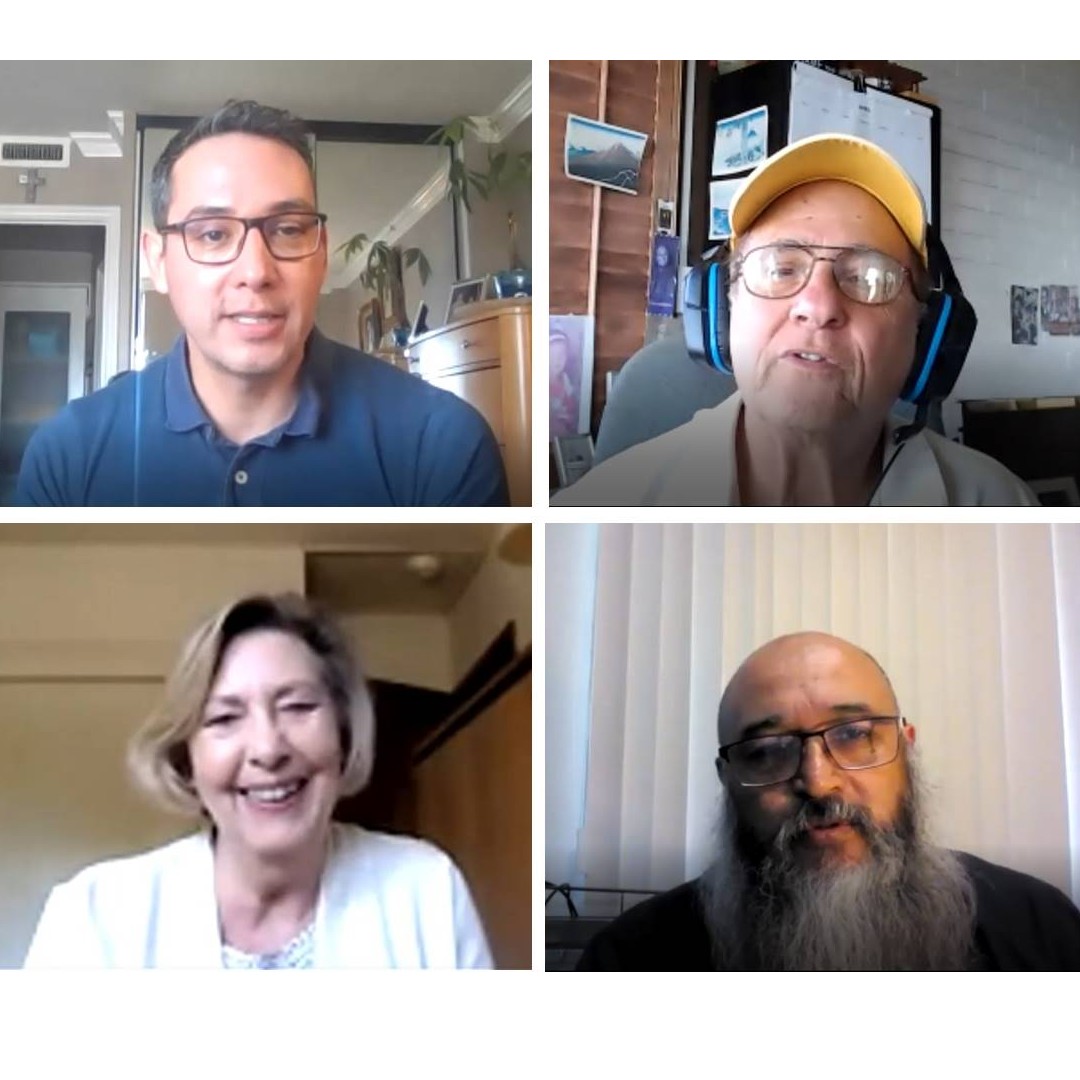
By Ann Nye and Fraser Perkins —
Environmental Justice – Climate Change From the Streets was the theme of the Palos Verdes Democrats April 18th meeting, with presentations by Dr. Michael Méndez, Steve Goldsmith and Mike Munoz.
Before introducing the speakers, moderator Ann Nye wished everyone a “Happy Earth Day” and said, “every day should be Earth Day. Thanks to the Clean Air Act which was approved by a unanimous Senate and only one “no” vote in the House and then signed into law by President Nixon on the last day of 1970 (50 years ago), air quality across the United States has gotten substantially cleaner, even as industry and the number of cars on the road have increased.” “The success of this bill,” she added, “is a reminder of how capable we are of cleaning up pollution when our political leaders are prepared to act on scientific evidence.”
Judy Mitchell joined Ann as a co-moderator. Mitchell was a member of the South Coast Air Quality Management District (AQMD) from 2010-2020 and was appointed by Governor Brown as a member of the CA Air Resources Board (CARB) from 2013-2020. While a member of the AQMD, Mitchell championed the Warehouse Rule, which states that transportation warehouses like Amazon would have to use zero emission vehicles in their warehouses and also provide charging for electric trucks using those warehouses.
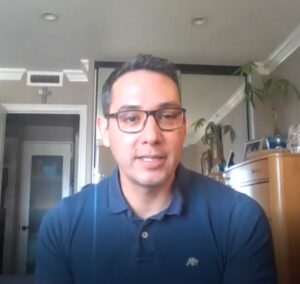 Our featured speaker, Dr. Michael Méndez, assistant professor of urban planning and public policy at the University of CA, Irvine, documented some of the crucial years of the environmental justice movement in California from 2006 to the present in Climate Change from the Streets: How Conflict and Collaboration Strengthen the Environmental Justice Movement. In his book, Méndez defines street science as an embodied knowledge developed within local communities, which is often dismissed as being anecdotal. Méndez began his talk noting he used to be a member of the Sacramento Stonewall Democrats and knows from personal experience how influential local Democratic clubs can be. “Just as everyday should be Earth Day,” Méndez said, “Racial Justice and Environmental Justice Day also should be celebrated every day.” According to Méndez, the climate change discussion used to be a global abstract discussion with the polar bear on a melting iceberg as the symbol, but in 2021, this polar bear symbol was retired. This global focus made it seem like climate change was happening out there to animals and plants and not in our own backyards. In 2010, the West Oakland Environmental Indicators Project made a point of saying, “CLIMATE JUSTICE is also about YOU(th)!” and not just about polar bears. Méndez says, “Environmental Justice (EJ) groups are often pitted against traditional environmentalists who favor the least costly mitigation solutions, which do not necessarily maximize equity and public health outcomes in low-income communities of color… Although the science of climate change is clear, policy decisions about how to respond to its affects remain contentious.” Surrounded by people resisting environmental racism while growing up in the Latino immigrant communities of Los Angeles, Méndez saw activists protesting the clean-up of toxic properties and developed an understanding of environmental alternatives. He emphasized that people of color have often been ignored in setting environmental policies. Climate change policy must merge both global and community-based perspectives to forge solutions to our common problem. In emphasizing the youth in the struggle for Environmental Justice, Méndez shared this quote from Alan Turing, “Sometimes it is the people no one imagines anything of, who do the things that no one can imagine.”
Our featured speaker, Dr. Michael Méndez, assistant professor of urban planning and public policy at the University of CA, Irvine, documented some of the crucial years of the environmental justice movement in California from 2006 to the present in Climate Change from the Streets: How Conflict and Collaboration Strengthen the Environmental Justice Movement. In his book, Méndez defines street science as an embodied knowledge developed within local communities, which is often dismissed as being anecdotal. Méndez began his talk noting he used to be a member of the Sacramento Stonewall Democrats and knows from personal experience how influential local Democratic clubs can be. “Just as everyday should be Earth Day,” Méndez said, “Racial Justice and Environmental Justice Day also should be celebrated every day.” According to Méndez, the climate change discussion used to be a global abstract discussion with the polar bear on a melting iceberg as the symbol, but in 2021, this polar bear symbol was retired. This global focus made it seem like climate change was happening out there to animals and plants and not in our own backyards. In 2010, the West Oakland Environmental Indicators Project made a point of saying, “CLIMATE JUSTICE is also about YOU(th)!” and not just about polar bears. Méndez says, “Environmental Justice (EJ) groups are often pitted against traditional environmentalists who favor the least costly mitigation solutions, which do not necessarily maximize equity and public health outcomes in low-income communities of color… Although the science of climate change is clear, policy decisions about how to respond to its affects remain contentious.” Surrounded by people resisting environmental racism while growing up in the Latino immigrant communities of Los Angeles, Méndez saw activists protesting the clean-up of toxic properties and developed an understanding of environmental alternatives. He emphasized that people of color have often been ignored in setting environmental policies. Climate change policy must merge both global and community-based perspectives to forge solutions to our common problem. In emphasizing the youth in the struggle for Environmental Justice, Méndez shared this quote from Alan Turing, “Sometimes it is the people no one imagines anything of, who do the things that no one can imagine.”
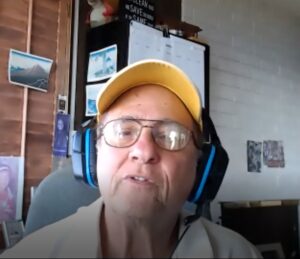 Steve Goldsmith, a leader of the Torrance Refinery Action Alliance (TRAA), presented an update on a major local environmental threat of Hydrogen Fluoride acid (HF) used at the Torrance and Wilmington refineries. TRAA formed after the massive Torrance refinery explosion on February 18, 2015, and the subsequent research that uncovered the threat of HF. Goldsmith presented a very compelling flyer that everyone should see, which showed the danger zone from a refinery explosion is a security threat since it covers both the port complex and the Los Angeles Air Force Base. Despite the large number of residents from the local communities advocating a ban on HF in refinery operations, Goldsmith said the refineries built an alliance with the building trade councils and put a lot of political pressure on the AQMD and legislatures to block bills opposing HF. TRAA has built support with EJ groups in Wilmington, city councils. LA County Board of Supervisors, local officials (like Muratsuchi), and our five local Congressmembers Bass, Lowenthal, Waters, Lieu, and Barrigan. Goldsmith showed a July 2019 letter from the U. S. Senate to the Environmental Protection Agency (EPA) asking the EPA to re-evaluate the existing Risk Management Plans for the refineries that still use HF and stated, “Refineries in Utah and Louisiana have already demonstrated the viability of alternatives to HF by ending the use of HF in their processes.” Goldsmith conceded it costs a lot of money to replace HF, but emphasized the risks are greater and there have been two near misses since 2019: one was in Philadelphia where luckily no one was injured and the other was at a Texas refinery where 800 people were hospitalized. Going forward, Goldsmith is optimistic that both court lawsuits and EPA actions may lead to a favorable outcome. He concluded by urging viewers to become active in the TRAA, sign-up for their newsletter, and come to their monthly meetings. Find out information about the TRAA on their website www.traasouthbay.com.
Steve Goldsmith, a leader of the Torrance Refinery Action Alliance (TRAA), presented an update on a major local environmental threat of Hydrogen Fluoride acid (HF) used at the Torrance and Wilmington refineries. TRAA formed after the massive Torrance refinery explosion on February 18, 2015, and the subsequent research that uncovered the threat of HF. Goldsmith presented a very compelling flyer that everyone should see, which showed the danger zone from a refinery explosion is a security threat since it covers both the port complex and the Los Angeles Air Force Base. Despite the large number of residents from the local communities advocating a ban on HF in refinery operations, Goldsmith said the refineries built an alliance with the building trade councils and put a lot of political pressure on the AQMD and legislatures to block bills opposing HF. TRAA has built support with EJ groups in Wilmington, city councils. LA County Board of Supervisors, local officials (like Muratsuchi), and our five local Congressmembers Bass, Lowenthal, Waters, Lieu, and Barrigan. Goldsmith showed a July 2019 letter from the U. S. Senate to the Environmental Protection Agency (EPA) asking the EPA to re-evaluate the existing Risk Management Plans for the refineries that still use HF and stated, “Refineries in Utah and Louisiana have already demonstrated the viability of alternatives to HF by ending the use of HF in their processes.” Goldsmith conceded it costs a lot of money to replace HF, but emphasized the risks are greater and there have been two near misses since 2019: one was in Philadelphia where luckily no one was injured and the other was at a Texas refinery where 800 people were hospitalized. Going forward, Goldsmith is optimistic that both court lawsuits and EPA actions may lead to a favorable outcome. He concluded by urging viewers to become active in the TRAA, sign-up for their newsletter, and come to their monthly meetings. Find out information about the TRAA on their website www.traasouthbay.com.
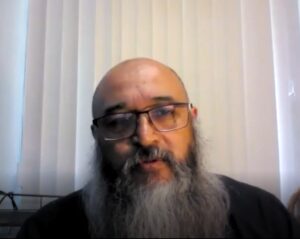 Mike Munoz, senior policy analyst for the Los Angeles Alliance for a New Economy’s (LAANE) Our People Our Port Coalition campaign, educated us on three state policy initiatives they feel will clean up our ports and support the truck drivers. The cleaning up of the Los Angeles port began in 2007 with the Clean Air Action Plan to transition to cleaner trucks, clean up the port’s equipment and the ships that were docked at the port. The initial bill included a requirement for the trucking companies to use employee drivers to ensure the better funded truck companies could afford to purchase cleaner trucks and maintain them. However, the trucking companies fought against this employee mandate all the way to the Supreme Court, which struck the mandate provision, and as a result, this language was stripped from the Clean Air Action Plan. Munoz says the misclassification of drivers as independent contractors, rather than as employees of trucking companies, shifts the burden of transitioning to zero emission trucks from the companies to the drivers and forces drivers into abusive leasing contracts with trucking companies. COVID accentuated the plight of the misclassified independent contractors by forcing them to purchase their own Personal Protection Equipment (PPE). Most drivers couldn’t afford or didn’t have access to PPE and had to continue to work without it. CAL/OSHA is now reviewing this issue.
Mike Munoz, senior policy analyst for the Los Angeles Alliance for a New Economy’s (LAANE) Our People Our Port Coalition campaign, educated us on three state policy initiatives they feel will clean up our ports and support the truck drivers. The cleaning up of the Los Angeles port began in 2007 with the Clean Air Action Plan to transition to cleaner trucks, clean up the port’s equipment and the ships that were docked at the port. The initial bill included a requirement for the trucking companies to use employee drivers to ensure the better funded truck companies could afford to purchase cleaner trucks and maintain them. However, the trucking companies fought against this employee mandate all the way to the Supreme Court, which struck the mandate provision, and as a result, this language was stripped from the Clean Air Action Plan. Munoz says the misclassification of drivers as independent contractors, rather than as employees of trucking companies, shifts the burden of transitioning to zero emission trucks from the companies to the drivers and forces drivers into abusive leasing contracts with trucking companies. COVID accentuated the plight of the misclassified independent contractors by forcing them to purchase their own Personal Protection Equipment (PPE). Most drivers couldn’t afford or didn’t have access to PPE and had to continue to work without it. CAL/OSHA is now reviewing this issue.
Munoz presented three legislative bills, SB 338, AB 794, and SB 700, that Our People Our Ports are working on to address the abusive labor practices at the ports. [UPDATE: after the April meeting, LAANE reached out to us to endorse these bills. The PV Dems Board voted YES to endorse all three bills.]
- SB 338, sponsored by State Senator Lean Gonzalez (SD 33), closes the loop-hole that allows companies that are repeat offenders of labor disputes with misclassified port drivers to be put on a “bad employer list”.
- AB 794, sponsored by Assemblymember Wendy Carrillo (AD 51), ensures the community has a pathway to the zero emission electric vehicle, good paying jobs, and directs CARB to develop workforce standards that companies must meet to be eligible for clean truck incentives.
- SB 700, sponsored by State Senator Maria Elena Durazo (SD 24), makes trucking companies that misclassify its drivers, accountable for paying taxes so the drivers are eligible for unemployment benefits from CA’s Employment Development Department (EDD).
In closing, Munoz provided status on a workers’ strike that began at the ports last week. A company, Universal Logistics Holding (ULH), had bought two of the “worst” trucking companies at the ports in 2019. Later, in December, one of their divisions (a small one with only 26 drivers) voted to join the Teamsters. A few weeks later, ULH closed that division right before Christmas and transferred the work to a division with a non-union company that misclassifies its drivers as independent contractors. The Teamsters tried to negotiate without success, and ended up going on strike against one of ULH’s primary divisions. Last week, at one of the port terminals, the ILWU, in solidarity with the Teamsters, walked the picket line with the drivers, an action that is historic to the labor movement.
Here are some of the comments from the Q&A discussion.
Méndez thought TRAA was doing a great job building a coalition against the refineries, and thought they would benefit from linking their fight with legislation at the state level in Sacramento. Steve Goldsmith emphasized that coalition building between community groups and trade unions was essential to protecting both the port and local communities from the threat posed by refinery operations and said it was difficult for “progressive” unions, like ILWU, to take a stand against the refinery unions.
Munoz thought the passage of Proposition 22, which reclassified app-based workers as independent contractors, only impacted one trucking company which uses an app to send out its drivers. Before Proposition 22, the truck companies challenged AB 5 which was forcing them to treat drivers as employees. This case is still working its way through the courts, where they are awaiting the decision on whether AB 5 can preempt federal law and stop the misclassification of drivers as independent contractors. Currently, companies can save 30% on personnel costs (unemployment, workman’s compensation) and shift the costs of diesel fuel and truck maintenance to the drivers. The maintenance costs delays drivers from buying things like particulate filters and other clean-air retro-fit parts.
Judy Mitchell, speaking as a past regulator on AQMD, reminded us that there are currently 6,000 – 8,000 trucks in the port area that predate 2010, and by 2023, every truck must be newer than 2010 under CARB regulations. The transition to zero emission trucks is one of Mitchell’s passions (see her interview in the Feb PV Dems Newsletter) and said she’d be happy to work with Munoz and LAANE about this issue. Munoz says, “AQMD is the only environmental regulatory agency that actually has language that asks, Have you violated a truck driver’s rights in the past three years?”
In regard to market based solutions like cap and trade, Méndez thought EJ groups were opposed to these type of market based environmental solutions. He said EJ groups prefer direct regulation to ensure polluters in their communities implement direct emission reductions on site in a timely way. In response to the EJ community, CA has championed an EJ screening tool, https://oehha.ca.gov/calenviroscreen, to help legislatures quantify where best to target funds to clean up the most polluted communities. It took ten years for CA to adopt this tool in their regulatory legislation because it was opposed not just by polluters but also by realtors, who feared it would depress real estate values.
For the South Coast AQMD region, Mitchell stressed pending ozone emission reduction deadlines coming in 2023 and 2031. For AQMD, they need to reduce our big pollutant, NOx emissions, because NOx mixed with sunshine creates ozone. Even though NOx is primarily a tailpipe emission which is a mobile source controlled by CARB, Mitchell predicted this dilemma – AQMD needs to reduce mobile sources which they don’t control, and this will cause them to miss the first deadline, but may meet the second one. Missing a deadline may cause the federal government to take over our local AQMD and impose penalties on it, but she’s also optimistic under a Biden administration we’ll get more help. Reducing diesel truck emissions will help us meet the ozone requirements.
Méndez thought, “Our carbon myopic view on carbon emission reductions needs to focus on where we reduce emissions and that it matters where global emissions are reduced alongside local emissions.” Burning fossil fuels releases greenhouse gases (GHGs), but also releases a lot of local pollutants like smog that affects people’s health. Carbon reduction at first only looked at mitigation. Now with the influence of the EJ groups, CA has focused in on community level climate adaptations from wildfires, heat waves, flooding, and droughts, which impact poor and low income communities of color the most.
Mitchell felt that government silos dealing with issues separately should collaborate with each other and every regulation must be viewed with an eye toward reducing pollution and greenhouse gases. Climate change is implemented at the state level. State regulatory agencies like CARB regulate GHGs as well as mobile sources of pollution and the local air districts (among them South Coast AQMD) regulate stationary sources of pollution, but do not regulate GHGs. Méndez believes this approach has put CA at the forefront of this type of collaboration between state and local governments.
In response to a question about a carbon fee and dividend approach to reducing GHG emissions, wherein the fees collected for carbon extraction or import is distributed to all US residents monthly, Méndez reminded us that EJ groups years ago supported this carbon tax approach (even though it was considered a market based approach) because it was more transparent. But now he thinks in 2021, that EJ groups have moved past this solution to a more comprehensive regulatory legislation on polluters. By Biden placing key EJ people in key environmental roles, Méndez believes there will be more of a focus on equity vs the carbon tax.
In discussing his current work, Méndez said he recently published a paper evaluating the impact of the Thomas wildfire in Santa Barbara and Ventura Counties. This paper exposed how disaster preparedness impacted people of color and the undocumented migrant communities and how immigrant groups were ignored as revealed by the glaring gaps in preparedness. As a member of the LA Regional Water Board, Méndez is also involved with water supply, water quality and drought resilience in our low-income communities. Méndez said a concern for local governments coming up in June is how they plan to comply with the new MS4 permits requiring them to reduce their storm water pollutants in wet and dry seasons. Mitchell agreed this is a big concern by local governments.
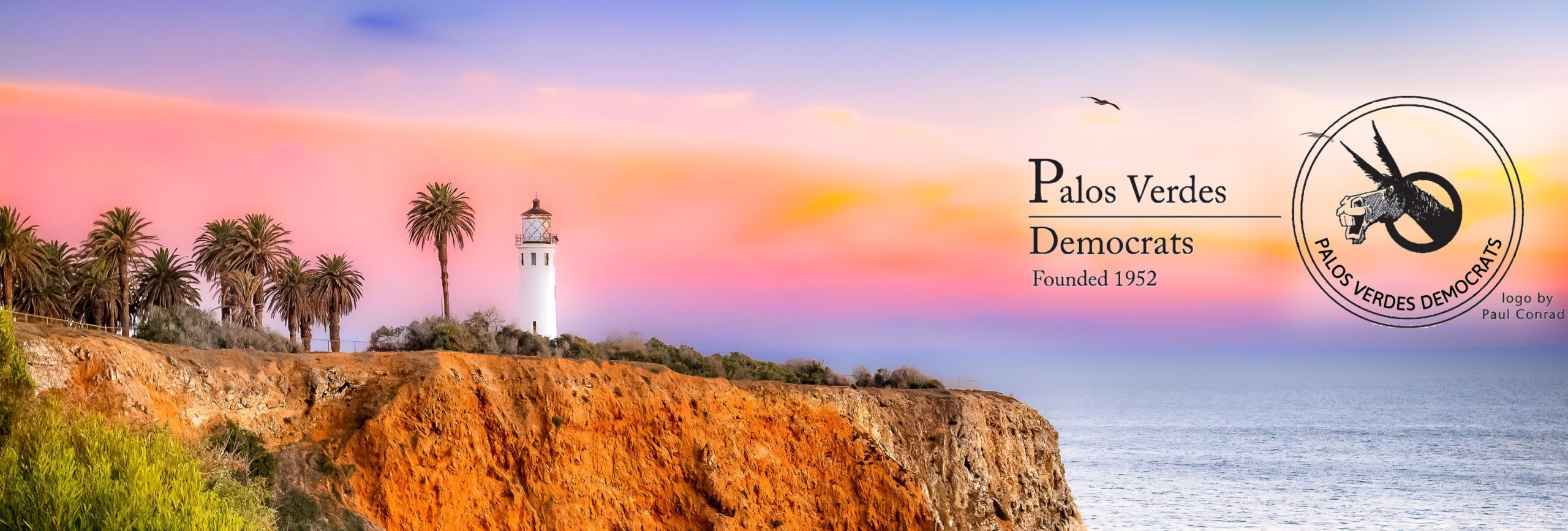
I appreciated receiving your Newsletter, especially the recap of Steve Goldsmith’s efforts with TRAA to police the use of Hydrogen Flouride (HF). Barbara and I live on the Palos Verdes Peninsula 10 miles from the Valero Refinery. Your newsletter prompted me to visit the TRAA website and send an email to Gov. Newsom.
Thank you for all that you do.
Cort